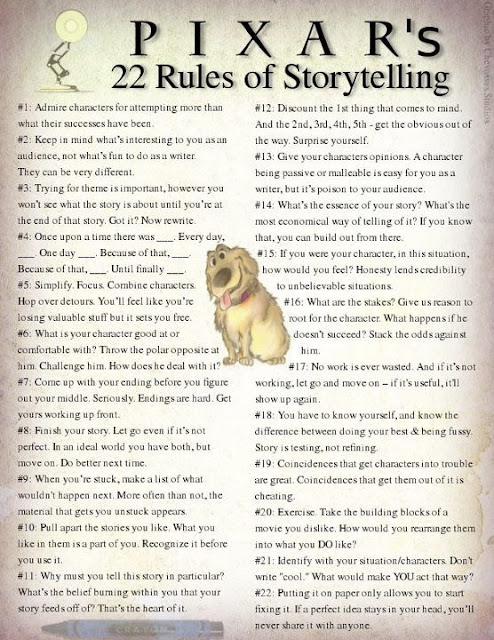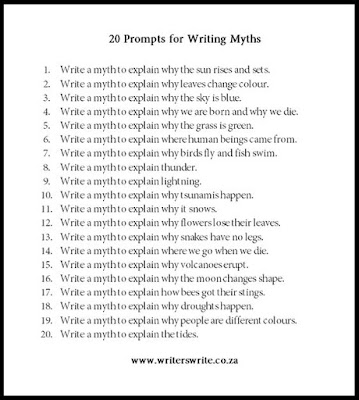“To translate knowledge and information into experience: that seems to be the function of literature and art.”
― Joseph Campbell, The Hero's Journey: Joseph Campbell on His Life & Work
The Hero’s Adventure Basic Recipe
Here is a basic recipe to demonstrate how the Hero’s Adventure plays out. This is a template you can apply to your own work-in-progress—you might be surprised by how closely it matches elements you already have in play.
- A messenger comes. The messenger might be human, or a message might come from an experience—like a brush with death or a dream. At any rate, something has gone wrong; the natural order of the world has been disturbed.
- A problem is presented. Perhaps something has been taken away from the tribe, or some misfortune or malfeasance has occurred.
- Someone is marked out as the person to solve this problem. She is chosen according to some past deed of her parents or by her own reputation or happenstance. This person, of course, emerges as the hero at the end.
- A challenge takes shape. The challenge may be refused, at first. “No way, I’m not going to risk my neck for that!”
- A refusal, often. But eventually the hero decides to accept the challenge. She might even be forced to accept it by circumstances.
- The challenge is accepted. The adventure begins.
- The hero leaves the familiar world. And she sets off into another world. It’s dangerous. The hero could use some help, and very often …
- Helpers materialize. A helper might have special skills the hero doesn’t have, or he might have special insights or wisdom, in which case he takes the form of a mentor.
- Setbacks occur. The hero is tested, she makes gains, she endures setbacks, she fights for what is right, she resists evil. The going’s tough!
- The hero regroups and gains some ground again. Maybe she needs another visit to a mentor, or maybe she makes a personal breakthrough and overcomes a great inner obstacle, perhaps her own fear.
- The foe is vanquished or the elixir is seized. Eventually she defeats the foe or comes into possession of something that will restore the natural order—a cure, or new knowledge that will bring justice or the return of prosperity.
- The hero returns to the familiar world. And the problem is fixed, or justice is done. The natural order is restored.
The person who accepts the challenge and prevails is elevated to a special position, somewhere above human, somewhere below god. She is the hero.
The Hero’s Adventure at Work
Famous stories from King Arthur and Excalibur to The Wonderful Wizard of Oz to The Little Engine That Could to Harry Potter are based on the Hero’s Adventure. Let’s look at a concrete example from a well-known source: the Sherlock Holmes story “The Adventure of the Speckled Band” by Sir Arthur Conan Doyle.
- A messenger comes. Holmes and Watson are hanging out in the familiar world of 221B Baker St. when a young lady comes calling.
- A problem is presented. The young lady tells Holmes that her sister has died under strange circumstances, and she now fears for her own life.
- Someone is marked out as the person to solve this problem. Knowing of Holmes’ reputation, the young lady asks him for help.
- A challenge takes shape. Holmes asks many questions, and perceives the seriousness of the situation.
- A refusal, often. Holmes rarely refuses a challenge, though he has been known to be reluctant at times. In this case, Holmes senses great urgency, so he doesn’t waffle.
- The challenge is accepted. The adventure begins.
- The hero leaves the familiar world. Holmes sets off from 221B Baker St. and enters the busy, raucous streets of London, thence to a creepy old mansion in the country. It’s dangerous. The hero could use some assistance.
- Helpers materialize. And guess what? He’s got Watson at his side! Much investigation occurs, with progress, and then …
- Setbacks occur. Things go wrong, problems turn out to be more difficult than anticipated.
- The hero regroups and gains some ground again. After a nail-biting, death-defying climax, Holmes prevails, discovering a deadly plot and a bizarre method of murder. The perpetrator is killed by the very method he had used to kill another.
- The foe is vanquished or the elixir is seized. Holmes and Watson wrap up the case for the local police and return to their flat in London.
- the Hero returns to the familiar world. And we feel secure because we know justice has been done; the killer cannot kill again. The natural order
is restored.
Read or watch practically any good, successful story you will find similar story bones. This is not by accident. Good writers have instincts for such things. We sharpen our instincts by studying and by writing, which you’ve been doing all along.
Now we will choose one of the moments from the Hero's Journey to make into a two-person, maybe three-person scene.
And how do we format a scene?
Here is a style guide from the City Theater in Pittsburgh
Here are some one-act play resources:
This is long but really worth staying with it
Stan Lee - think butts in seats rather than turing pages
Like he says, "You just have to keep interesting yourself while you are writing it."
Read and watch to be inspired. Christopher and Jessi, if you have any suggestions feel free to send them to the class. Here are some of mine:
Take a Seat (he's channeling his inner Woody Allen.)
You can also Google "Family 2.0" and see a variety of interpretations of this short play. Here is a high school one that I like - but there are many, many variations on the YouTube















